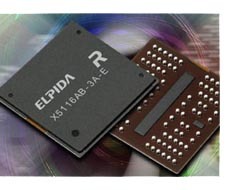Elpida, Toshiba sample XDR DRAM modules
Tokyo - Elpida and Toshiba simultaneously announced availability of XDR DRAM modules in sample quantities. XDR will make its debut in Sony's next PlayStation and other consumer electronics devices and is prepped for use in high-end graphics cards.
Rambus' XDR technology is gaining traction with announcements from Elpida and Toshiba to make memory modules available in smaller numbers, so-called sample quantities. A similar announcement was made by Samsung back in January. While Samsung currently offers only 256 Mbit XDR devices, Elpida and Toshiba provide 512 Mbit modules.
Manufacturers and IP owner Rambus currently promote XDR as high-bandwidth memory for multimedia applications. The memory is likely to be first seen in conjunction with the Cell processor in Sony's next-gen PlayStation. Soon thereafter XDR is expected to be used for other devices in need of high-performance memory, such as high-end TVs, entertainment PCs. Rambus is careful to suggest any other applications beyond that, but industry sources already confirmed that XDR is considered as successor for GDDR3 memory in high-end graphics cards for 2006 and could even make its way into PCs as system memory in the 2007 time frame.
Toshiba's 512 Mbit XDR version runs at a speed of 4.8 GHz providing a bandwidth of 12.8 Gbit per second, according to a company statement.
According to Rambus, XDR memory can be scaled in steps of 800 MHz from 2.4 GHz up to 8 GHz. The company declined to comment on current maximum speeds of XDR. Representatives limited their information by mentioning that the technology runs at "significantly more than 3.2 GHz in the labs".
Elpida, Samsung and Toshiba aim for a mass production of XDR memory devices in the second half of this year.
Related stories
Samsung pushes next-gen Rambus memory into production
Get Tom's Hardware's best news and in-depth reviews, straight to your inbox.

Wolfgang Gruener is an experienced professional in digital strategy and content, specializing in web strategy, content architecture, user experience, and applying AI in content operations within the insurtech industry. His previous roles include Director, Digital Strategy and Content Experience at American Eagle, Managing Editor at TG Daily, and contributing to publications like Tom's Guide and Tom's Hardware.
